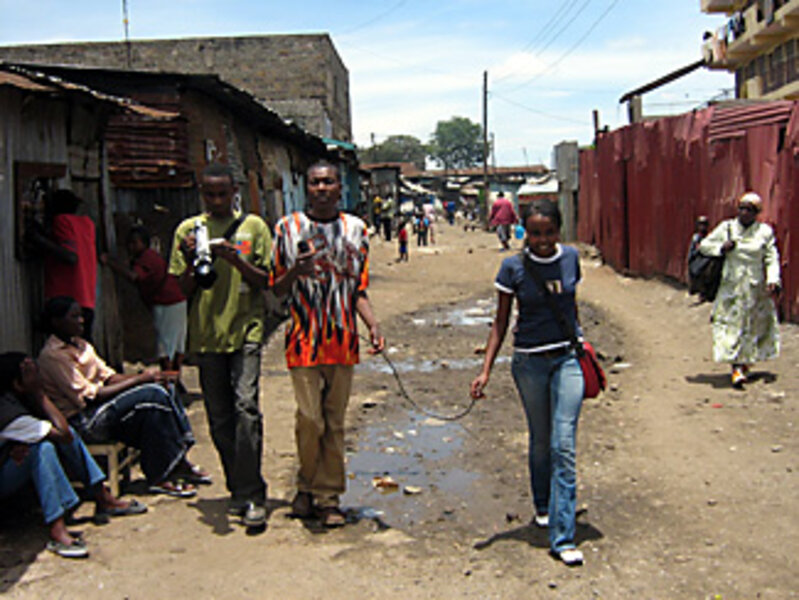Kenya camera crew spotlights untold stories with Slum TV
Loading...
| NAIROBI, Kenya
The three-person crew of Slum TV set out under the hot noon sun, slinging a video camera and microphone through the crooked labyrinth of iron-sided shacks, rickety-stick markets, and open sewers that is their home, Mathare.
Reporter Esther Wanjiru found her first interview: a man sitting in the shade of Glory Med clinic.
"What do you think of the grand coalition government?" she asked in serious tones, as cameraman Benson Kamau and soundman Fred Otieno took their positions.
The man replied – he wasn't expecting his life to change much now that Kenya's politicians have struck a power-sharing deal – and the young crew moved on, gathering views from sewer cleaners and tomato sellers, butchers, jobless young men, and people dancing in dark music halls at 1 p.m.
"It's like a revolution, slowly, slowly," Mr. Kamau said as he walked, offering his highest hopes for Slum TV, 15 or so young Mathare filmmakers devoted to chronicling life in their neighborhood. "They say we are idlers, but we have good minds and a point of view. And we want to compete in the broader world."
Slum TV was founded three years ago with help from an Austrian artist who provided money for a camera and a laptop, which remain the outfit's only equipment.
In better, quieter times, the team has documented commonplace scenes around Mathare – shakedowns at public toilets, a woman who fries potatoes for a living.
On a few cool evenings, they've cleared off an open swath of dirt, tapped an electrical wire for power, and projected the videos on a white sheet for an audience of hundreds.
In recent weeks, however, the crew members found themselves in one of the world's biggest stories as Kenya sank into violence following the disputed Dec. 27 presidential election. Mathare itself – where about 500,000 people live without running water or electricity – became an ethnic war zone.
During the crisis, Kamau, Mr. Otieno, and Ms. Wanjiru often followed behind crews from CNN and British Channel 4, who had money to hire bodyguards.
But as the international media trained lenses on burning cars and young men with machetes, the Slum TV crew found other stories they deemed equally important — people from different ethnic groups giving one another food and shelter, young people who refused to take up the machete, and local leaders who brokered peace between neighbors.
They recorded the landscape of destruction left behind — burned-out markets, demolished houses, and tented camps of the displaced thousands that still ring the muddy edges of Mathare.
They are gathering the last footage now and will show their coverage in Mathare next month. "We want to give people this information so these things never happen again," Kamau said. "We want to make sure young people focus on the positive – some people do not even realize their own capabilities."





